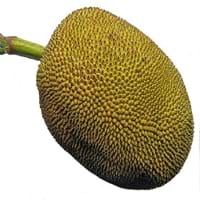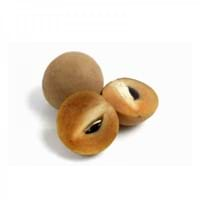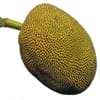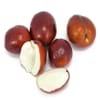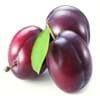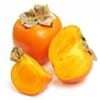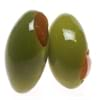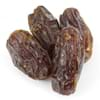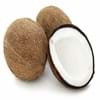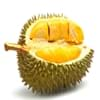Health Benefits
Cancer prevention, Heart care, Prevents constipation, Regulation of heart rate, Treatment of colonic diseases
Anti-inflammatory properties, Arthritis treatment, Regulates Blood Sugar, Unknown
General Benefits
Controls blood pressure, Cures cough, Digestive aid, Flu treatment, Improves eye vision, Treatment of common cold
Boosts immune system, Controls blood sugar levels, Digestive aid
Skin Benefits
Brightens and lightens complexion, Reduces wrinkles
Nourishes skin, Protects skin from oxidative stress
Hair Benefits
Promotes longer and healthier hair, Regulates hair growth
Prevents hair loss, Promotes longer and healthier hair, Regulates hair growth
Allergy Symptoms
Abdominal cramps, Diarrhea, Skin Rashes, Swelling of mouth, tongue or lips, Vomiting
Asthma, Red rash, Swelling of mouth, tongue or lips
Side Effects
Allergic reaction, Coagulation
Diarrhoea, Vomiting
Pregnant Women
Not Available
Yes
Best Time to Eat
Along with meal, As a snack in the late afternoon, Don't consume at night and before bed, Eat the fresh ones, avoid mixing with any other foods, don't eat after meal., Morning time (before lunch)
As a snack in the late afternoon
Vitamin B5 (Pantothenic Acid)
Vitamin C (Ascorbic Acid)
Vitamin E (Tocopherole)
Not Available
Lutein+Zeaxanthin
Not Available
Calories in Fresh Fruit with Peel
Not Available
Calories in Fresh Fruit without Peel
Not Available
Calories in Juice
Not Available
Calories in Jam
Not Available
Calories in Pie
Not Available
Type
Tree fruit, Tropical
Berry
Season
Autumn, Monsoon, Summer
Winter
Varieties
Black Gold, Cheena, Cochin, Dang Rasimi, Golden Nugget and Golden Pillow
Bush Table Queen, Heirloom Table Queen, Festival Hybrid, Early Acorn Hybrid, Table Ace, Ebony and Cream of the Crop
Seedless Variety
No
Not Available
Color
Dark green, Golden yellow, Green, Indigo, Magenta, Yellowish-orange
Dark green, Green-yellow, Orange green
Inside Color
Yellow
Not Available
Origin
India
Central America, North America, Unknown
Soil Type
Clay loam, Porous, Sandy, Well-drained
Well-drained
Climatic Conditions
Humid, Warm
Cold, Sunny
Facts about
- There are up to 500 seeds in Jackfruit & these seeds are edible.
- Root extracts of Jackfruit tree is used to treat diarrhea, fever and asthma.
- The taste of jackfruit is combination of mango, banana, melon and papaya.
- It was named as Acorn Squash for its resemblance to a large ribbed acorn.
- It is said that squash was being grown in Mexico as long as 10,000 years ago.
- It was the first food cultivated by native American Indians.
Cocktails
Yes
Not Available
Other Countries
Bangladesh, Indonesia, Nepal, Thailand
Egypt, India, Iran, Italy, Mexico, Russia, Turkey, Ukraine, United States of America
Top Importer
United States of America
UAE
Botanical Name
Artocarpus heterophyllus
Cucurbita Pepo
Synonym
Artocarpus heterophylla or Artocarpus integra or Artocarpus integrifolia
Winter Squash
Subkingdom
Tracheobionta
Tracheobionta
Division
Magnoliophyta
Magnoliophyta
Class
Magnoliopsida
Magnoliopsida
Subclass
Alismidae
Dillenhidae
Order
Rosales
Cucurbitales
Family
Moraceae
Cucurbitaceae
Genus
Artocarpus
Cucurbita
Species
A. heterophyllus
Pepo
Generic Group
Not Available
Not Available
Difference Between Jackfruit and Sapota
We might think that Jackfruit and Sapota are similar with respect to nutritional value and health benefits. But the nutrient content of both fruits is different. Jackfruit and Sapota Facts such as their taste, shape, color, and size are also distinct. The difference between Jackfruit and Sapota is explained here.
The amount of calories in 100 gm of fresh Jackfruit and Sapota with peel is Not Available and 40.00 kcal and the amount of calories without peel is 95.00 kcal and Not Available respectively. Thus, Jackfruit and Sapota belong to High Calorie Fruits and Low Calorie Fruits category.These fruits might or might not differ with respect to their scientific classification. The order of Jackfruit and Sapota is Rosales and Cucurbitales respectively. Jackfruit belongs to Moraceae family and Sapota belongs to Cucurbitaceae family. Jackfruit belongs to Artocarpus genus of A. heterophyllus species and Sapota belongs to Cucurbita genus of Pepo species. Beings plants, both fruits belong to Plantae Kingdom.
